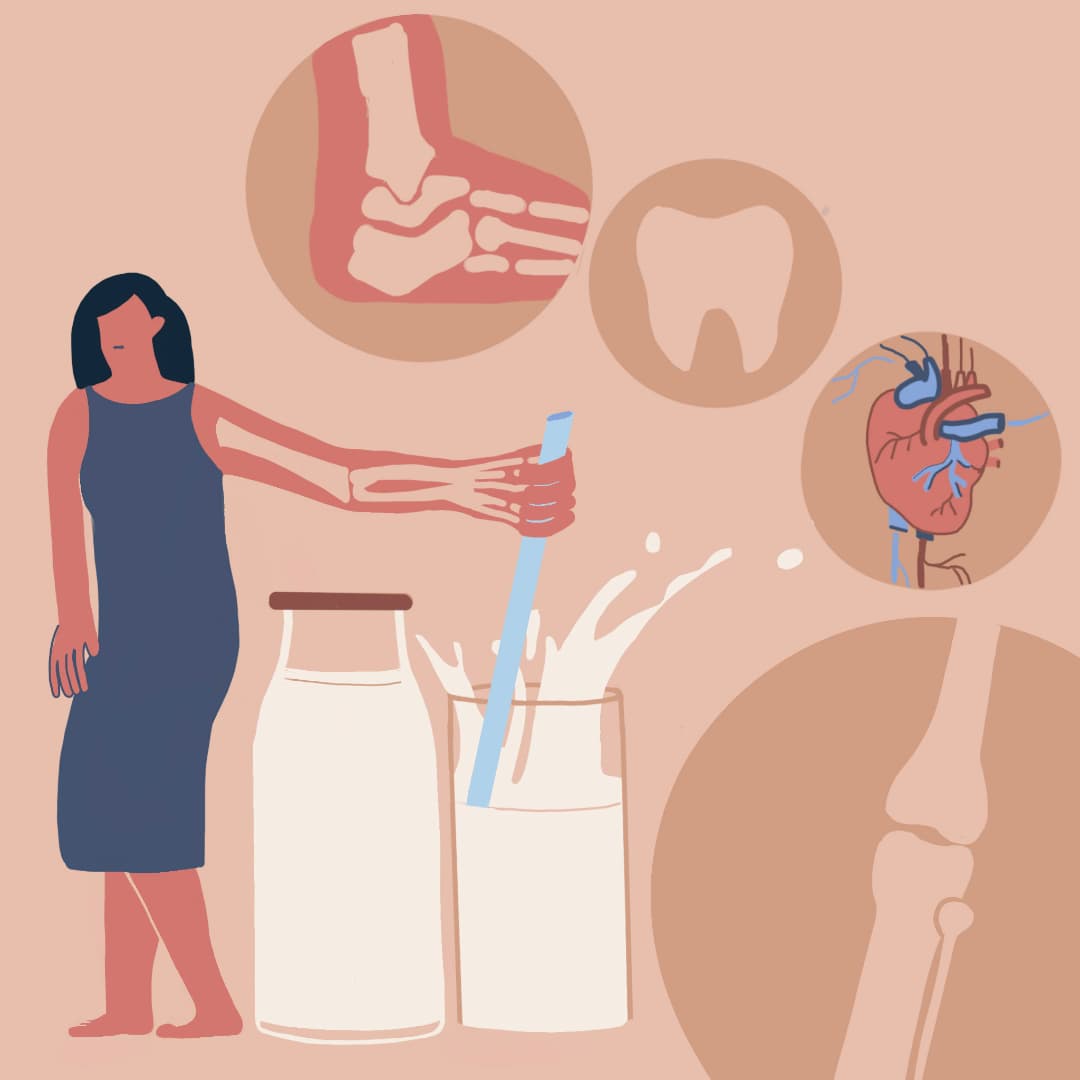Overview
Osteoporosis causes bones to become brittle — sometimes, to the extent of causing a fracture just by mild stresses. Fractures commonly caused by Osteoporosis, occur in the hip, wrist or spine. Bone formation is a constant process. Bone is continuously broken and replaced. Osteoporosis occurs when the bone replacement is slower or negligible after the loss of old bone.
Is osteoporosis any different for men and women?
The risk of getting Osteoporosis increases with age. Osteoporosis is common in men and women of all races and ethnicities. However, it is four times more common in women because: a) After menopause, when the ovaries no longer produce oestrogen (the female hormone) the process of bone loss accelerates for several years and, b) Before the process of bone loss begins, men often achieve a higher degree of bone density. Men still lose bone mass, but it must be more severe before osteoporosis develops.
Who is at risk for developing osteoporosis and what are the causes of getting it?
All men and women, especially those over the age of 60, are at risk of developing osteoporosis. Your body generates new bone quicker than it breaks down old bone while you're young, so your bone mass grows. This process slows after the early twenties and the bone mass is lost quicker than it is formed. You would be surprised to know that most people attain their maximal bone mass by the age of thirty.
Following circumstances may also cause significant bone loss, increasing your risk of osteoporosis
- Estrogen insufficiency (a condition in which the body lacks the hormone oestrogen)
- Taking estrogen-lowering medication, such as for breast cancer or endometriosis
- Beginning of Menopause before the age of 45
- Ovaries removed surgically before the age of 45
- Recurrent falls or slips
- History of fractures or poor bone health
- Low calcium consumption
- Alcoholism or smoking tobacco
- Lack of proper diet and exercise or physical activity
- Undiagnosed testosterone deficiency ( in men)
- Low body mass index (BMI)
- Heredity
- Chronic illness that affects the kidneys, lungs, stomach, and intestines by altering hormone levels
What are some of the signs and symptoms of osteoporosis?
Osteoporosis usually causes no symptoms. However, there are a few signs to watch out for:-
- Positional shift of posture (stooping or bending forward)
- Loss of stature (getting shorter by an inch or more)
- Fractures of the bones with little or no injury
- Breathing problems (smaller lung capacity due to compressed disks)
- Persistent unexplained lower back pain
What can I do to prevent osteoporosis?
The following suggestions may help in preventing or slowing bone loss. If you already have osteoporosis, the following steps can help you slow down the loss of bone mass.
1. Exercise
Exercise can help prevent osteoporosis. It stimulates bone-making cells and strengthens your bones. It is recommended to engage in regular weight-bearing exercise, including activities such as brisk walking, aerobics, dancing, jogging, etc. in which your feet and legs bear your body's weight. You should exercise consistently for the best results, aiming for at least 30-40 minutes of moderate exercise or physical activity five days a week.
2. Diet
Calcium and vitamin D-rich foods are essential for bone health. In persons over the age of 50, a daily calcium intake of at least 1000-1200 mg is suggested.
Bread, calcium-fortified soya milk, some vegetables (curly kale, okra, spinach, etc), and certain fruits (dried apricots, dried figs, etc) are all rich sources of calcium. Calcium is also present in butter, cream, and soft cheeses in small amounts.
Always consult your doctor first before using over the counter calcium supplement.
The body needs vitamin D to absorb calcium. Hence, without sufficient vitamin D, calcium may not reach adequate levels in the body. Your body produces vitamin D in the skin as a result of sunlight's UV rays. However, this may not supply you with enough vitamin D and often you may need to take a supplement. There are various strengths available for vitamin D in the market. Again, it's best to check with your doctor before self medicating. Most adults require 1000-2000 IU of vitamin D per day.
(Please note that above info on dosage of supplements may vary depending on age, medical conditions and pregnancy. Always check with your doctor the correct dose for you.)
3. Smoking and drinking
Tobacco chemicals can enter your bloodstream and harm your bones, worsening bone loss. If you smoke, you should strive to quit as soon as possible. Also, if you consume more than fourteen-fifteen units of alcohol each week, you should aim to reduce your consumption.
What is the test to diagnose osteoporosis?
As osteoporosis has no obvious physical symptoms, it may go undetected for a long period. If your doctor suspects you have osteoporosis or you are at high risk, you may be recommended to have a DEXA (dual energy x-ray absorptiometry) scan to assess your bone density.
The scan is simple and requires you for around 15 minutes while your bones are x-rayed. The following are examples of probable outcomes:
- Normal — Your chances of sustaining a low-impact fracture are slim.
- Osteopenia — Your bones are weakening, but the chance of a low-impact fracture is minimal. Depending on your other risk factors, you may require therapy such as calcium and/ or vitamin D. You should talk to your doctor about how you might lower your risk factors.
- Osteoporosis — You're more likely to suffer from low-impact fractures and may require specific treatment. You should talk to your doctor about it.
Final Words
Ask your healthcare practitioner about getting evaluated for osteoporosis if you have risk factors and are concerned about the disease, even if you are not yet 65 (for women) or 70 (for men). Osteoporosis has the potential to change your life adversely. If you have a tendency to fall, or are concerned about bone fractures, or have significant persistent back pain, seek advice from your healthcare practitioner right away.
With timely diagnosis and right treatment, it is well possible to live an active life with osteoporosis.
Disclaimer - This information is provided for educational purposes and should not be construed as medical advice. Please consult with your healthcare practitioners before undertaking any changes in your diet or adding supplements.
ProactiveForHer is a digital clinic for women, offering accessible, personalized, and confidential healthcare solutions. We offer products and services for out-patient health concerns of Indian women, across their lifetime - from puberty to pregnancy to menopause. To know more on the sexual and reproductive health of women, visit https://www.proactiveforher.com/

